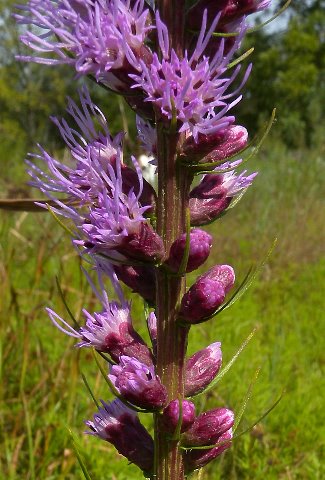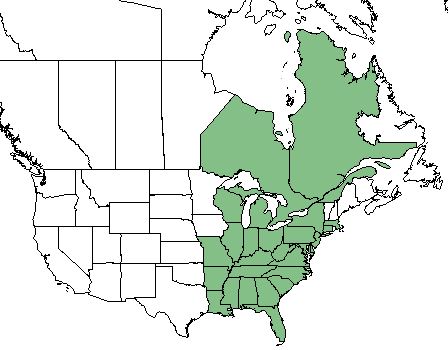Difference between revisions of "Liatris spicata"
(→Ecology) |
(→Diseases and parasites) |
||
| Line 42: | Line 42: | ||
===Use by animals=== <!--Herbivory, granivory, insect hosting, etc.--> | ===Use by animals=== <!--Herbivory, granivory, insect hosting, etc.--> | ||
''L. spicata'' has low palatability for browsing and grazing animals. <ref name= "USDA Plant Database"/> | ''L. spicata'' has low palatability for browsing and grazing animals. <ref name= "USDA Plant Database"/> | ||
| − | ==Diseases and parasites== | + | ===Diseases and parasites=== |
''L. spicata'' is highly colonized by mycorrhizal fungi. <ref name= "Anderson and Menges 1994"> Anderson, R. C. and E. S. Menges (1997). "Effects of fire on sandhill herbs: nutrients, mycorrhizae, and biomass allocation." American Journal of Botany 84: 938-948. </ref> | ''L. spicata'' is highly colonized by mycorrhizal fungi. <ref name= "Anderson and Menges 1994"> Anderson, R. C. and E. S. Menges (1997). "Effects of fire on sandhill herbs: nutrients, mycorrhizae, and biomass allocation." American Journal of Botany 84: 938-948. </ref> | ||
Revision as of 17:25, 14 June 2018
Common name: dense blazing star [1], florist's gayfeather [2]
| Liatris spicata | |
|---|---|

| |
| Photo by the Illinois Wildflowers Database | |
| Scientific classification | |
| Kingdom: | Plantae |
| Division: | Magnoliophyta - Flowering plants |
| Class: | Magnoliopsida - Dicots |
| Order: | Asterales |
| Family: | Asteraceae |
| Genus: | Liatris |
| Species: | L. spicata |
| Binomial name | |
| Liatris spicata L. | |

| |
| Natural range of Liatris spicata from USDA NRCS Plants Database. | |
Contents
Taxonomic Notes
Synonyms: none
Varieties: Liatris spicata (Linnaeus) Willdenow var. resinosa (Nuttall) Gaiser; Liatris spicata (Linnaeus) Willdenow var. spicata
Description
L. spicata is a perennial forb/herb of the Asteraceae native to North America and Canada. [1]
Distribution
L. spicata is found in the southeastern corner of the United States from Arkansas to Massachusetts, as well as the Ontario and Quebec regions of Canada. [1]
Ecology
Habitat
L. spicata is found in bogs, wet longleaf pine savannas, seepages, prairies, roadsides, and grassy balds. [2]
Phenology
L. spicata flowers in July, September, and October. [3]
Fire ecology
L. spicata is not fire resistant, but has high fire tolerance. [1]
Use by animals
L. spicata has low palatability for browsing and grazing animals. [1]
Diseases and parasites
L. spicata is highly colonized by mycorrhizal fungi. [4]
Conservation and Management
Cultivation and restoration
Photo Gallery
References and notes
- ↑ 1.0 1.1 1.2 1.3 1.4 USDA Plant Database https://plants.usda.gov/core/profile?symbol=LISP
- ↑ 2.0 2.1 Weakley, A. S. (2015). Flora of the Southern and Mid-Atlantic States. Chapel Hill, NC, University of North Carolina Herbarium.
- ↑ PanFlora Author: Gil Nelson URL: http://www.gilnelson.com/PanFlora/ Date Accessed: 5/24/18
- ↑ Anderson, R. C. and E. S. Menges (1997). "Effects of fire on sandhill herbs: nutrients, mycorrhizae, and biomass allocation." American Journal of Botany 84: 938-948.